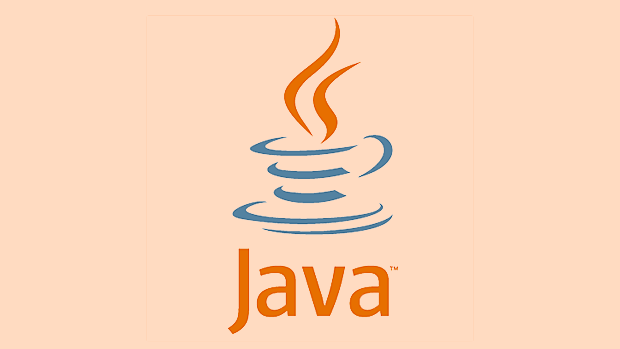Understanding thread pools in Java ExecutorService.
Jul 05, 2025 am 01:21 AMThread pools are the core mechanism used to manage threads in Java concurrent programming. Their role is to avoid the performance overhead caused by frequent creation and destruction of threads. 1. It improves response speed and resource utilization by pre-creating a set of threads and waiting for task allocation; 2. It is suitable for handling a large number of short life cycle and highly repetitive tasks, such as network requests or timing tasks; 3. Java provides a variety of thread pool types, including FixedThreadPool (suitable for heavy load systems), CachedThreadPool (suitable for short-term asynchronous tasks), SingleThreadExecutor (suitable for task serial execution) and ScheduledThreadPool (suitable for timing and periodic tasks); 4. When using correctly, pay attention to setting the number of threads, selecting the appropriate task queue, closing the thread pool in time, and monitoring the running status; 5. Custom thread pools can more flexibly control core parameters, such as the number of core threads, maximum number of threads, idle timeout time, queue capacity and rejection strategies, thereby improving system stability and observability.

Java's ExecutorService is an important tool in concurrent programming, and thread pool (Thread Pool) is the core mechanism behind it. Using thread pools can avoid the performance overhead caused by frequent creation and destruction of threads, and improve program response speed and resource utilization.

What is a thread pool?
Simply put, a thread pool is a set of pre-created threads that are waiting for tasks to be executed. You just need to submit the task to the thread pool, which will automatically assign an idle thread to run the task instead of creating a new thread every time.

This method is particularly suitable for handling a large number of tasks with short life cycles and strong repetitiveness, such as network requests, timing tasks, etc. Java provides java.util.concurrent.Executors factory class to quickly create common thread pool types, such as fixed-size thread pools, cache thread pools, single-thread pools, etc.
Common thread pool types and applicable scenarios
-
FixedThreadPool
Fixed-size thread pool. Suitable for systems with heavy load and stable tasks, such as back-end services continuously processing user requests.
CachedThreadPool
A cacheable thread pool, the number of threads is not fixed, and a new thread will be created as needed, but the idle thread will be reused. Suitable for scenarios where many short-term asynchronous tasks are performed.SingleThreadExecutor
A single-threaded thread pool ensures that all tasks are executed in order. Suitable for scenarios where tasks need to be executed in serial, such as log writing or queue consumption.ScheduledThreadPool
Supports timing and periodic task execution. It is often used for regular refresh of caches, regular check of status and other requirements.
You can choose the appropriate thread pool type according to the actual business situation, or you can customize the thread pool to control core parameters more flexibly.
How to use thread pool correctly?
There are several key points to pay attention to when using thread pools:
Set the number of threads reasonably : Too many threads will cause context switching overhead, and too few may cause tasks to wait in line. Generally, it can be set according to the number of CPU cores and task type (CPU-intensive or IO-intensive).
Pay attention to the selection of task queues : the default is to use an unbounded queue (such as
LinkedBlockingQueue), which may cause memory overflow. In high concurrency scenarios, it is recommended to use bounded queues and use them in conjunction with rejection policies.Remember to close the thread pool : When the thread pool is no longer needed,
shutdown()method should be called to close gracefully to ensure that the submitted tasks can be executed. If you want to stop immediately, you can callshutdownNow().Monitor thread pool status : You can monitor the number of active threads, task queue length and other indicators through subclasses of
ThreadPoolExecutoror third-party tools (such as Prometheus Micrometer), so as to facilitate timely discover performance bottlenecks.
What are the advantages of custom thread pools?
Although Executors provides a convenient factory approach, it is generally recommended to manually create thread pools with new ThreadPoolExecutor(...) in production environments. This allows for more precise control of the following parameters:
- Number of core threads (corePoolSize)
- Maximum number of threads (maximumPoolSize)
- Idle thread timeout time (keepAliveTime)
- Task Queue Capacity (workQueue)
- RejectedExecutionHandler
For example, if you want to log and notify the monitoring system when there are too many tasks, you can customize the rejection policy instead of throwing exceptions directly by default.
Basically that's it. Thread pools are not a black technology, but they can significantly improve concurrency performance when used properly, and may also cause serious problems if configured improperly, such as OOM or task accumulation. Therefore, understanding its principles and behavior is very important in actual development.
The above is the detailed content of Understanding thread pools in Java ExecutorService.. For more information, please follow other related articles on the PHP Chinese website!

Hot AI Tools

Undress AI Tool
Undress images for free

Undresser.AI Undress
AI-powered app for creating realistic nude photos

AI Clothes Remover
Online AI tool for removing clothes from photos.

Clothoff.io
AI clothes remover

Video Face Swap
Swap faces in any video effortlessly with our completely free AI face swap tool!

Hot Article

Hot Tools

Notepad++7.3.1
Easy-to-use and free code editor

SublimeText3 Chinese version
Chinese version, very easy to use

Zend Studio 13.0.1
Powerful PHP integrated development environment

Dreamweaver CS6
Visual web development tools

SublimeText3 Mac version
God-level code editing software (SublimeText3)

Hot Topics
 Python obtains tourist attraction information and reviews and creates word clouds and data visualization
Apr 11, 2023 pm 08:49 PM
Python obtains tourist attraction information and reviews and creates word clouds and data visualization
Apr 11, 2023 pm 08:49 PM
Hello everyone, I am Mr. Zhanshu! As the saying goes: Wouldn’t it be great to have friends from far away? It is a very happy thing to have friends come to play with us, so we must do our best to be landlords and take our friends to play! So the question is, when is the best time and where to go, and where is the most fun place? Today I will teach you step by step how to use the thread pool to crawl the attraction information and review data of the same trip and make word cloud and data visualization! ! ! Let you know information about tourist attractions in various cities. Before we start crawling data, let's first understand threads. Thread process: A process is a running activity of code on a data collection. It is the basic unit of resource allocation and scheduling in the system. Thread: It is a lightweight process, the smallest unit of program execution, and an execution path of the process. one
 Common server load problems and their solutions under Linux systems
Jun 18, 2023 am 09:22 AM
Common server load problems and their solutions under Linux systems
Jun 18, 2023 am 09:22 AM
Linux is an excellent operating system that is widely used in server systems. In the process of using Linux systems, server load problems are a common phenomenon. Server load means that the server's system resources cannot satisfy current requests, causing the system load to be too high, thus affecting server performance. This article will introduce common server load problems and their solutions under Linux systems. 1. The CPU load is too high. When the server's CPU load is too high, it will cause problems such as slower system response and longer request processing time. When C
 How to use thread pool to implement circular scheduling of tasks in Java 7
Jul 29, 2023 pm 10:37 PM
How to use thread pool to implement circular scheduling of tasks in Java 7
Jul 29, 2023 pm 10:37 PM
How to use thread pools to implement circular scheduling of tasks in Java7 Introduction: When developing Java applications, using thread pools can improve task execution efficiency and resource utilization. In Java7, the thread pool can be used to easily implement circular scheduling of tasks. This article will introduce how to use thread pools to implement circular scheduling of tasks in Java7, and attach corresponding code examples. 1. Overview: The thread pool is a multi-thread processing structure that can reuse a fixed number of threads to avoid frequent creation and
 How to use the ExecutorCompletionService function in Java for thread pool task scheduling
Jun 26, 2023 pm 02:49 PM
How to use the ExecutorCompletionService function in Java for thread pool task scheduling
Jun 26, 2023 pm 02:49 PM
With the development of Internet technology, the importance of multi-threaded programming has become increasingly prominent. When writing high-concurrency programs, making full use of multi-threading technology can greatly improve the execution efficiency of the program. However, multi-threaded programming itself involves many issues, such as communication between threads, synchronization cooperation, etc. In order to solve these problems, Java provides many thread pool frameworks, among which ExecutorCompletionService is one of them. This article will introduce ExecutorCompletionServi
 Where is the spring thread pool configured?
Jan 19, 2024 pm 04:55 PM
Where is the spring thread pool configured?
Jan 19, 2024 pm 04:55 PM
Methods to configure the spring thread pool: 1. Use ThreadPoolTaskExecutor Bean; 2. Use SimpleAsyncTaskExecutor; 3. Use TaskExecutor Bean in XML; 4. Use third-party libraries; 5. Customize the implementation; 6. Configure through system properties or environment variables; 7. Integration and containers; 8. Programmatic configuration; 9. Integration using third-party frameworks; 10. Hybrid configuration; 11. Consider resource limitations and constraints, etc.
 How to handle service thread pool and task scheduling in microservice architecture?
May 17, 2023 am 08:36 AM
How to handle service thread pool and task scheduling in microservice architecture?
May 17, 2023 am 08:36 AM
With the widespread application of microservice architecture in enterprise-level applications, how to optimize the performance and stability of microservices has become the focus of attention. In microservices, a microservice may handle thousands of requests, and the service's thread pool and task scheduling are also important components of microservice performance and stability. This article will introduce thread pools and task scheduling in microservice architecture, and how to optimize the performance of thread pools and task scheduling in microservices. 1. Thread pool in microservice architecture In microservice architecture, each request processed by microservice will occupy its thread pool.
 How to use thread pool to implement priority scheduling of tasks in Java 7
Jul 30, 2023 pm 06:38 PM
How to use thread pool to implement priority scheduling of tasks in Java 7
Jul 30, 2023 pm 06:38 PM
How to use thread pools to implement task priority scheduling in Java7 In concurrent programming, task priority scheduling is a common requirement. Java provides a thread pool mechanism that allows us to easily manage and schedule tasks. This article will introduce how to use the thread pool to implement task priority scheduling in Java7. First, we need to understand the basic concepts and usage of thread pools in Java7. A thread pool is a thread reuse mechanism that manages and schedules a group of threads to perform multiple tasks. Java mention
 How to implement Springboot's own thread pool
Jun 28, 2023 pm 04:33 PM
How to implement Springboot's own thread pool
Jun 28, 2023 pm 04:33 PM
1: ThreadPoolTaskExecuto1 ThreadPoolTaskExecutor Thread pool: ThreadPoolTaskExecutor is a secondary encapsulation of Spring based on Java's own thread pool ThreadPoolExecutor. The main purpose is to make it more convenient to use thread pools in the spring framework system. It is the default thread pool in Spring 2. Use ThreadPoolTaskExecutor to inject beans Go to the configuration file form in ioc, Spring will automatically configure ##Default thread pool configuration, ThreadPoolTaskExecutor#Core







